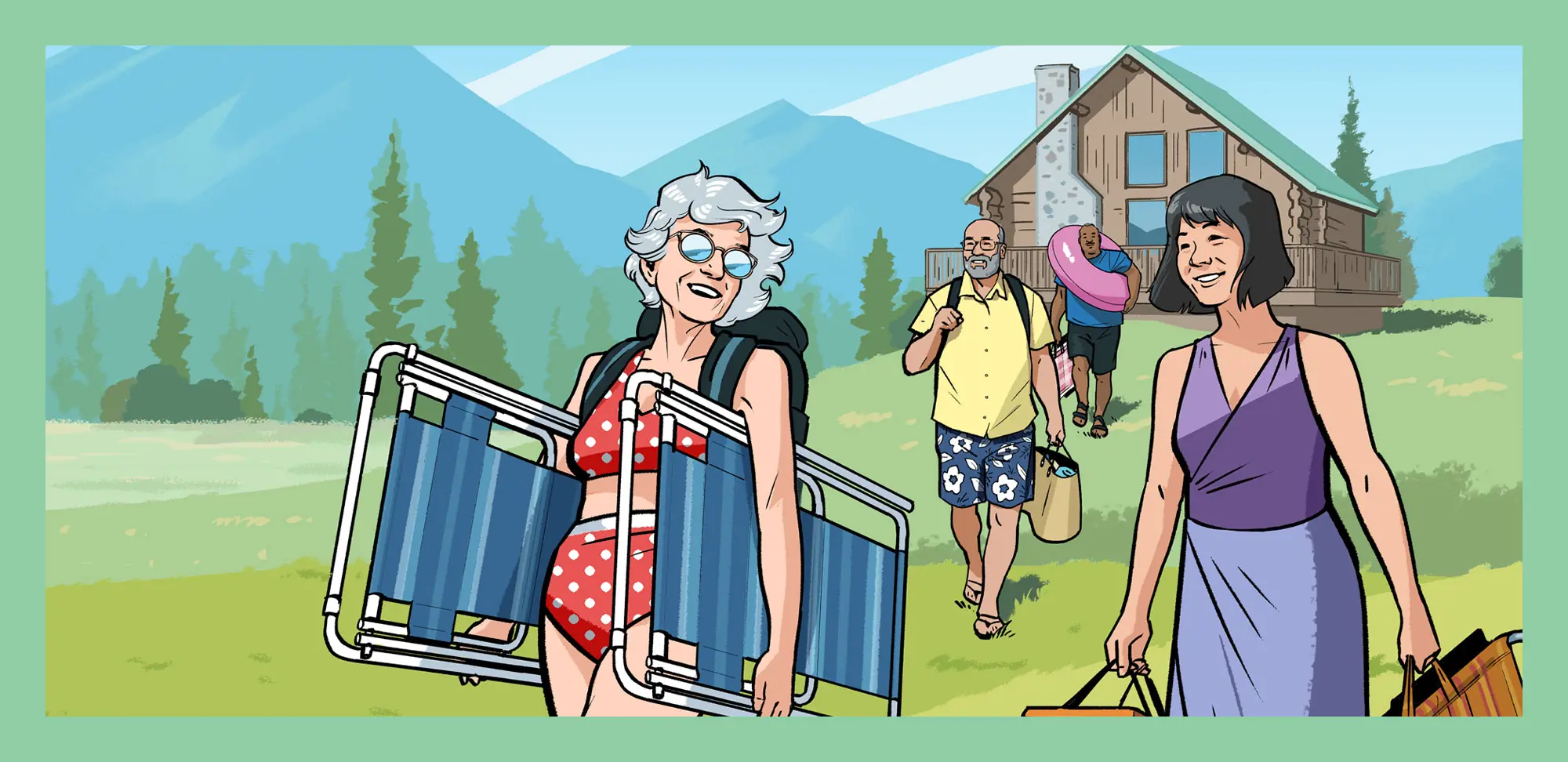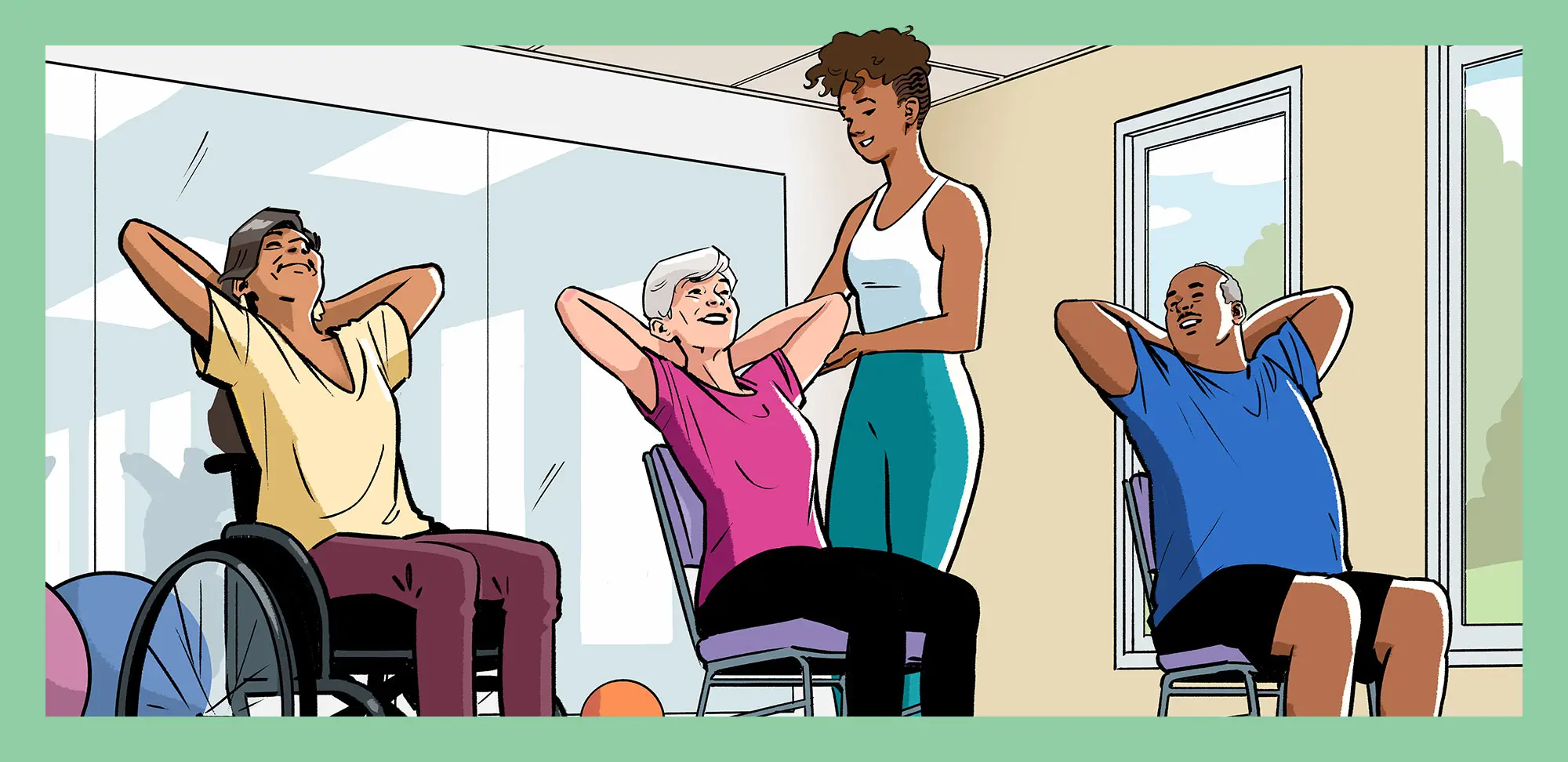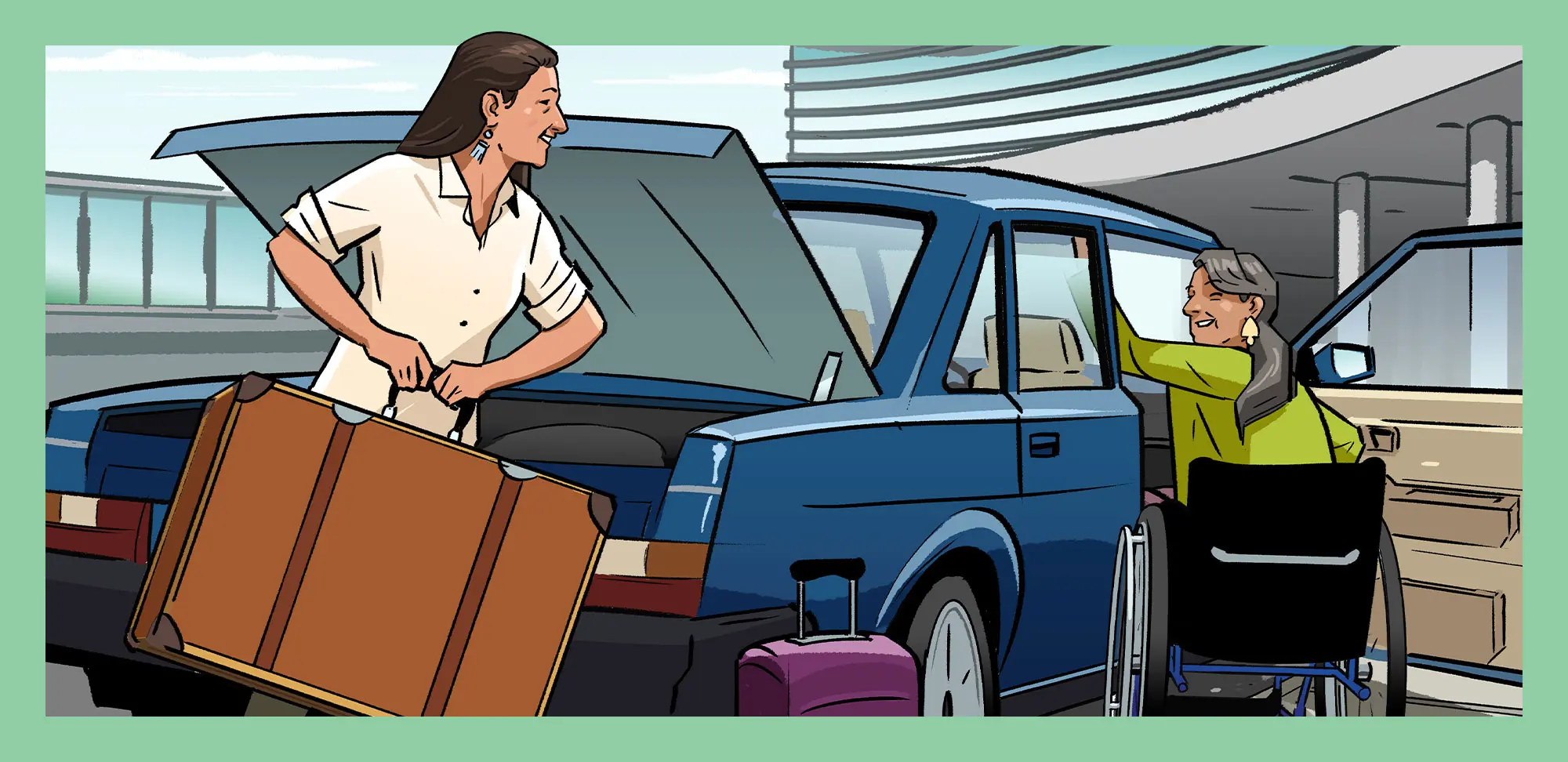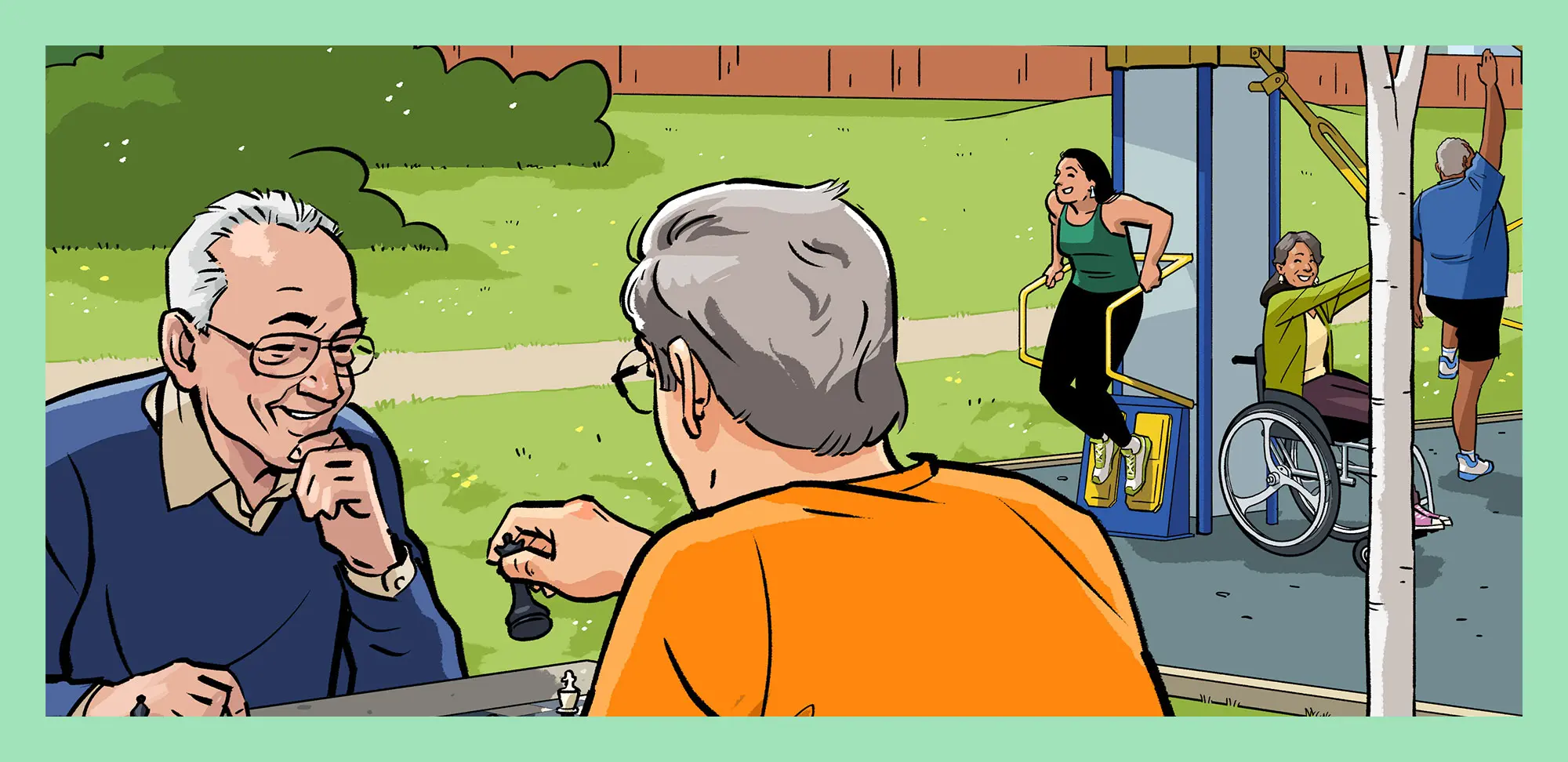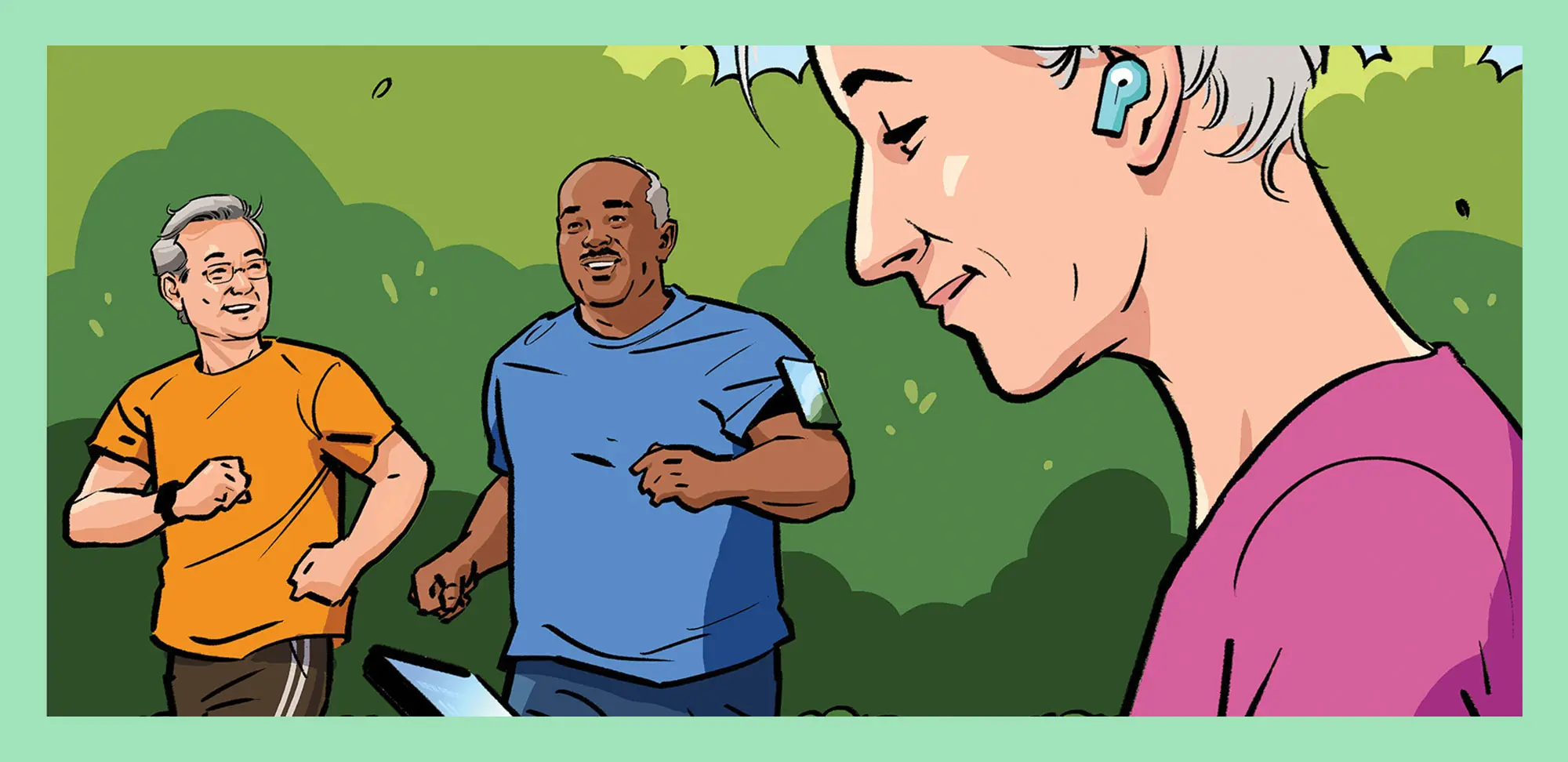Tricia Ham, owner of the Healthy Aging Coach Inc. in Calgary, and her 80-year-old mom just came back from holidays in Invermere, B.C. “The place we rented had 80 steps from the beach to our front door,” says Ham, “and my mom, who’s not even five feet tall, carried two lawn chairs and her backpack every day to and from the beach.”
“This is not what you’d expect an aging senior to do, but my mom has been preparing for it all her life,” she says. “She’s always had an active lifestyle and enjoys group fitness classes and other exercise. I love the example she sets, and she is one of the reasons I got into teaching fitness to seniors and mobility-challenged individuals.”
In the exercise classes she teaches and during one-on-one training, Ham uses functional training exercises that provide anti-aging and quality-of-life benefits. “We work on core strength, for example, because it’s so important for keeping our balance and our backs strong as we age. Impact exercise can help bone health. Flexibility and coordination are also important for mobility as they increase range of motion and contribute to our ability to execute controlled body movement, respectively.”
Integrate these five healthy-aging moves into your day or your regular exercise program. Special thanks to Jill Moreash of Variety Village, Toronto, for modifications for mobility-challenged readers.

Illustrations by Jori Bolton
Sit-to-Stand Squats
“Squats are a classic,” Ham says, “and so important not just for your lower body but for your core.”
Starting position: Sit toward the front edge of a sturdy chair (or chair in your living room while watching TV) with feet flat on the floor, hip-width apart. Keep your back straight and lean a little forward, so your chest is over your knees. Fold arms across your chest or place hands on your thighs or on arm rests if necessary.
The move: Push your heels down into the floor (to better engage your bum muscles) and stand up straight by straightening your knees and hips. You can push your hands on your thighs or arm rests for added support. To sit back down, keep your back straight and lean forward slightly. Then push your bum back a little and slowly lower yourself back down to the chair. Repeat 10 to 15 times. Do these squats every time you go to sit down with a goal to do 3 to 5 sets a day.
Modifications:
- If you use a wheelchair and cannot stand, push yourself up using your arms and core muscles to as far as you can. Engage glutes by doing bum squeezes, pushing down into your heels and pretending that you’re going to stand up.
- Alternatively, if you have some ability with your legs, push your weight into your heels to perform “bum squeezes” instead of stands.

One-Foot Balance
“Practising your balance is a good way to reduce your risk of falls and maintain your independence,” Ham explains.
Starting position: Stand with your left side beside the kitchen counter or bathroom vanity, about six inches away. Stand on your left foot and let your hand hover over the counter, using it only if necessary to get your balance.
The move: Tap the right toe lightly to the floor in front; return to starting position, pause, then tap to the right side and back to starting position; pause, then tap behind you and back to starting position. Keep your spine straight and try to maintain your balance while tapping. Repeat sequence 3 times, then switch sides. Stand with your right side beside the counter, balance on your right foot, and repeat the sequence tapping with your left foot.
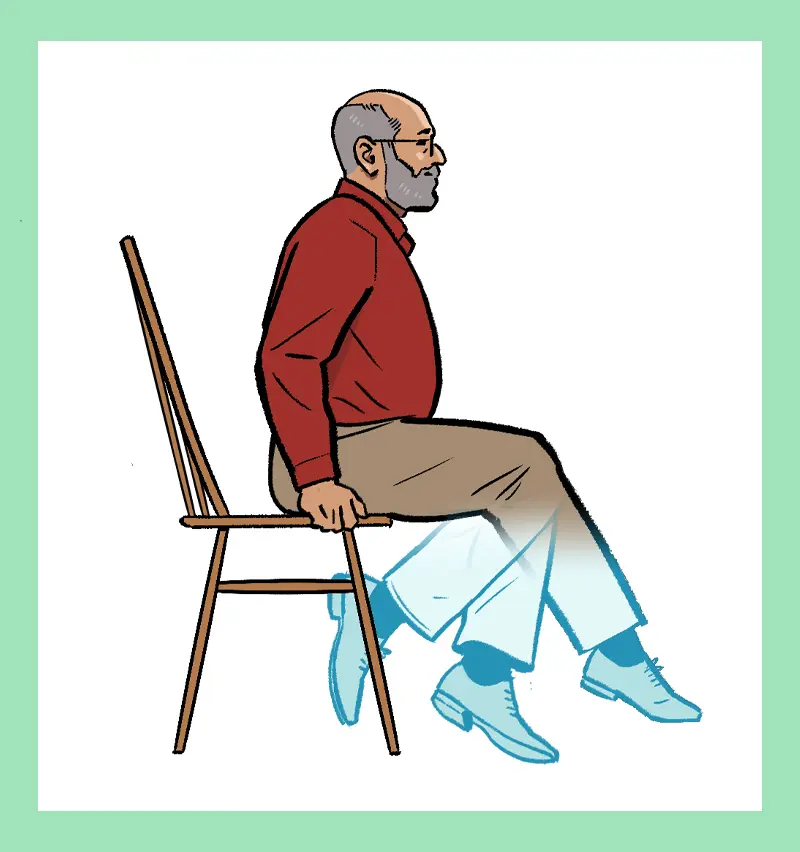
Modifications: If you cannot stand, sit in a chair or wheelchair toward the front of the chair. Tuck in belly button and tap the right toe lightly out to the floor in front; return to starting position; pause, then tap to the right side and back to starting position; pause, then tap towards the back of the chair and back to starting position. Repeat sequence 3 times, then switch sides.

Stomping
“Stomping,” Ham says, “is a fun way to improve balance and coordination, as well as providing safe impact exercise to improve bone health.”
Starting position: Stand up straight with arms bent by your sides. (You can do this anywhere – in your living room, while walking through the park or from your car in the parking lot to a store.)
The move: With arms bent and pumping by your sides, stomp your feet one at a time, imagining you are crushing an imaginary block under your feet as you stomp. Imagine that your feet are heavy and control the movement. Stomp for 30 seconds. Take a break. Repeat up to 3 times.
Starting position: Stand up straight with arms bent by your sides. (You can do this anywhere – in your living room, while walking through the park or from your car in the parking lot to a store.)
The move: With arms bent and pumping by your sides, stomp your feet one at a time, imagining you are crushing an imaginary block under your feet as you stomp. Imagine that your feet are heavy and control the movement. Stomp for 30 seconds. Take a break. Repeat up to 3 times.
Modifications:
- If you have had knee replacement, these exercises are contraindicated.
- If you have mobility issues, do the stomping exercise while seated.
- If you have knee pain, do a heel drop instead. In a standing position, go up on your tiptoes, then, keeping knees a little bent, drop down on your heels with some impact. Repeat 10 times.

If you cannot use your legs, do a gorilla slam instead. Sit in a wheelchair or chair with a few cushions in your lap. Inhale as you lift both arms up by your head, exhale as you bring both arms down together to slam the cushions. Repeat, bringing first your left hand down to slam the pillow, then your right hand. Repeat 10 times. Pause. Repeat once or twice more.
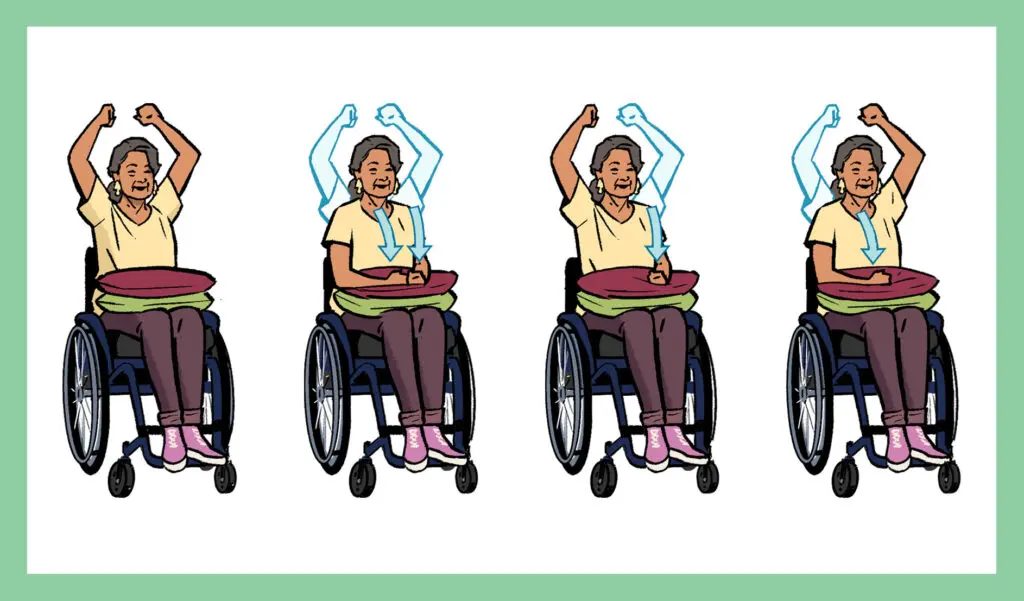
Dead Bug
“Dead Bug engages your core but also your brain to coordinate these moves,” Ham explains.
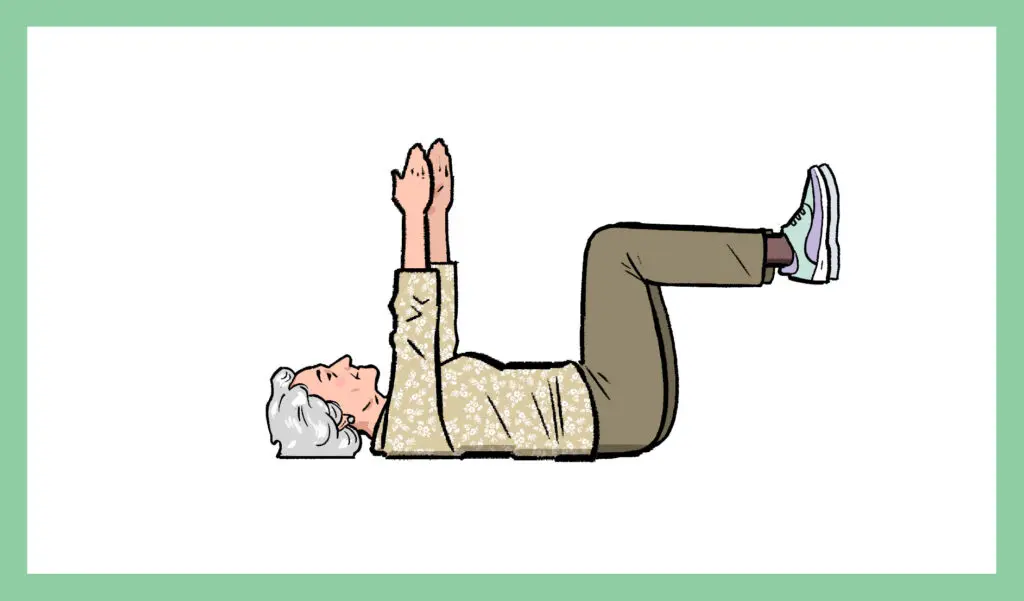
Starting position: Lie flat on your back on a mat or towel with arms extended straight up above chest, and hips and knees at 90 degrees with feet off the ground.

The move: Engage your core by pushing your lower back into the ground. Slowly reach your left arm back and over your head as you simultaneously extend right knee and hip, reaching right heel toward the floor (if straightening the leg is too much, keep your knee bent and touch your heel down to the floor). Control these movements. Don’t rush. Pause, then reverse the movement and return to starting position. Switch sides. Repeat, working your way up to 10 to 15 repetitions.

Modifications:
- For a seated move, sit at the front of a firm chair, feet flat on the floor and arms extended straight out at chest height. With left knee bent, lift your left foot off the floor six or more inches while simultaneously lifting your straight right arm overhead. Keep belly button in and back straight. Pause, then return to starting position. Repeat with the right leg and left arm. Complete as many repetitions as you can, working your way up to 10 to 15.
- For an arms-only variation, follow the sequence above but focus on engaging the core and sitting up as straight as possible and raising the arms only.
Wrist and Ankle Stretches
“Wrist and Ankle Stretches help keep all of your joints moving to keep you agile and help you maintain your range of motion,” Ham says.
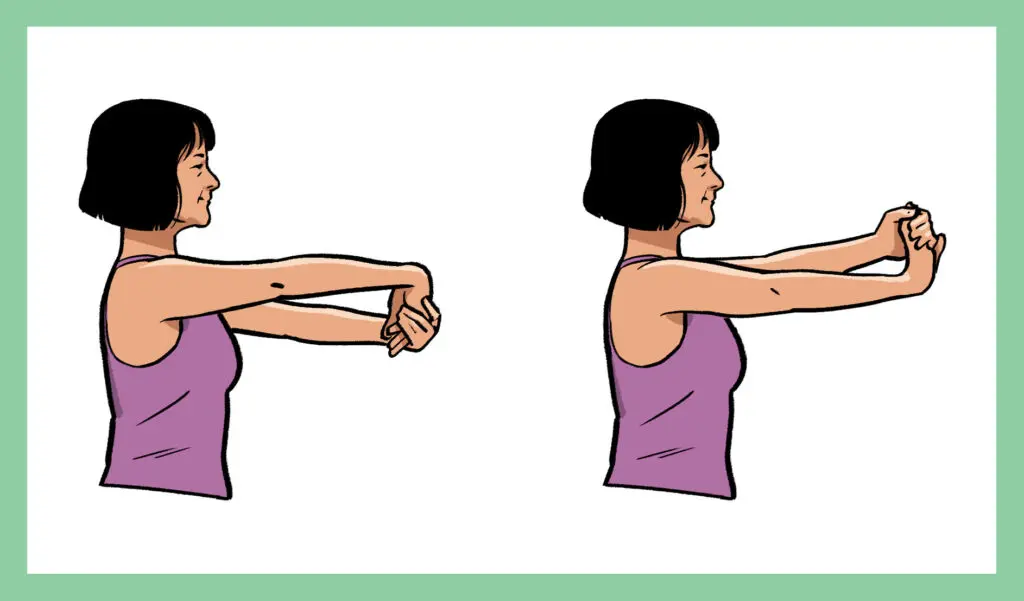
For wrists, stretch one arm out in front of you. Slowly point the fingers down until you feel a stretch. Use the other hand to gently pull the raised hand toward the body. Hold for 3 to 5 seconds. Point the fingers toward the ceiling until you feel a stretch. Use the other hand to gently pull the raised hand toward the body. Hold for 3 to 5 seconds. Repeat 3 times. Change sides.
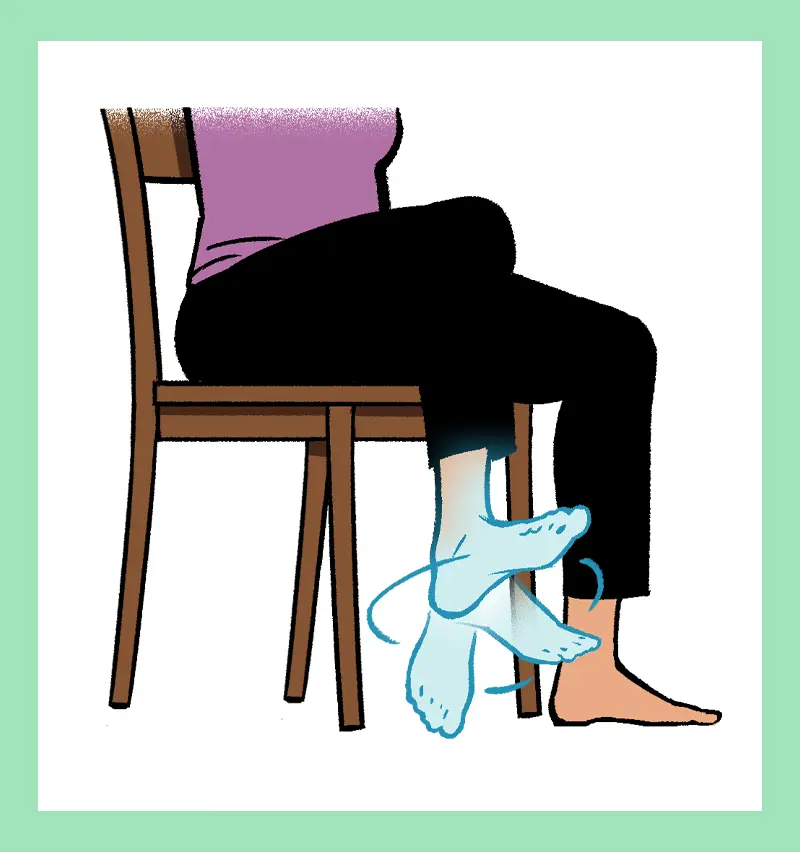
For ankles, sit in a chair and lift one leg up using your own strength or by lifting it with your hands. Holding the leg up, turn the raised ankle around slowly in circles to the left 10 times. Turn the ankle around slowly in circles to the right 10 times. Repeat this sequence 3 times. Change legs.
